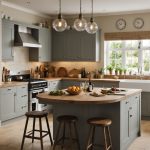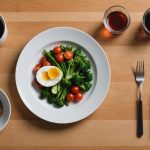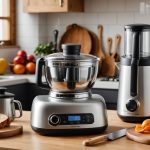Creating an Inspiring Kitchen Layout
Designing a kitchen space optimised for raw food preparation can profoundly impact creativity and efficiency. The key is ensuring there is ample open space, which allows for uninhibited movement during food preparation and inspires culinary creativity. An open layout promotes interaction with the cooking environment, making it easier to explore new dishes and techniques.
Consider implementing zoning areas dedicated to specific tasks like washing, chopping, and storage. By strategically placing these zones, you create a seamless workflow that enhances the cooking process. This separation ensures tools and ingredients are always within reach, minimizing distractions and streamlining preparation.
Additional reading : Crafting the Ultimate Eco-Friendly Farm-to-Table Kitchen: Innovative Tips for Sustainable Living
Natural light is an often-overlooked element that can enhance the cooking experience. By maximizing natural light, you bring life into the kitchen, improving mood and visibility while preparing food. It adds an organic warmth that electric lighting often lacks, fostering an inviting atmosphere conducive to mindful cooking.
Furthermore, utilise design elements that balance aesthetics with functionality. Thoughtful layout decisions can improve efficiency while maintaining a visually pleasing environment. Creatively arranged workstations can encourage experimentation and joy in raw food preparation, empowering you to embrace a vibrant culinary lifestyle. With these considerations, any kitchen can become a hub of inspiration and wellness.
Also read : Essential Design Elements for Creating Visually Accessible Kitchen Timers for the Blind
Essential Appliances for Raw Food Cooking
Integrating efficient raw food kitchen appliances can transform your culinary journey. Key appliances like a blender, food processor, and dehydrator are essential. Blenders create smooth textures ideal for soups and smoothies, while food processors manage chopping, slicing, and shredding, crucial for meal prepping. A dehydrator extends food life by removing moisture, allowing for the creation of unique textures like crunchy kale chips.
Energy-efficient appliances align with sustainable lifestyles, which is increasingly significant for environmentally-conscious cooks. Selecting appliances with energy efficiency ratings conserves not just resources but also reduces costs. Look for equipment with energy-saving modes or that run quietly to maintain kitchen tranquillity.
To ensure appliances fit seamlessly into your space, consider their size and storage options. If counter space is limited, opt for multi-functional devices or compact versions that don’t compromise on power. When choosing a blender or food processor, ensure it’s suitable for your volume needs, for example by evaluating wattage and capacity.
By prioritising these raw food kitchen appliances, you extend your cooking capabilities, emphasising both functionality and sustainability. Efficient and smart choices enable you to explore diverse recipes and culinary styles, enriching your raw food experience.
Storage Solutions for Raw Ingredients
Efficient raw food storage ideas are crucial for maintaining freshness and accessibility. Proper organisation ensures that fresh produce is not only easy to find but also stays visible, reducing waste and encouraging usage before spoilage. A simple technique is to arrange produce by type and frequently consumed items at eye level, enhancing quick selection and simplicity during meal prep.
Innovative storage options like glass containers and airtight bins can further aid in preserving ingredients. These containers provide a clear view, reminding you of what’s available while minimising plastic use. Airtight seals are particularly beneficial for prolonging shelf life by keeping air out and maintaining optimal freshness. Consider using stackable containers to maximise limited space.
Implementing best practices for preserving the freshness of raw ingredients involves techniques like portioning and labelling. Dividing larger quantities into smaller portions prevents excess exposure to air, maintaining flavour and texture. Labelling helps in keeping track of purchase dates, ensuring you use the oldest items first—a key step in reducing waste and promoting sustainability.
By prioritising organisation with effective raw food storage ideas, you create a kitchen environment that supports a healthy, waste-free lifestyle, enhancing both culinary creativity and convenience.
Tools for Preparing Raw Meals
The right set of raw food preparation tools is crucial in optimizing your raw culinary journey.
Essential kitchen tools for beginners
Beginner essentials include a set of sharp knives and durable cutting boards. These ensure precise cuts, which are fundamental when working with raw ingredients. A simple, high-quality spiralizer adds versatility, making it easy to incorporate diverse textures like zucchini noodles into your dishes.
Advanced tools for raw food enthusiasts
For more seasoned raw food enthusiasts, investing in advanced tools such as high-quality juicers and mandolins can elevate your experience. Juicers efficiently extract nutrient-packed juices from fruits and vegetables, while mandolins offer precision in slicing uniform pieces for visually appealing presentations.
Sustainable and eco-friendly tool options
Consider eco-friendly tool options to align with sustainable living. Choose utensils made from bamboo or recycled materials, reducing environmental impact. Reusable silicone bags and beeswax wraps are excellent alternatives for storage, minimising plastic waste.
By incorporating these raw food preparation tools, you enhance your culinary creativity while promoting a sustainable lifestyle. These tools empower you to create diverse and nutritious meals with ease, helping nurture a deep connection with your cooking process.
Design Ideas That Promote Energy and Wellness
Designing a kitchen with wellness in mind can transform cooking into a revitalizing experience. By integrating color psychology, you can create an atmosphere that is both calming and invigorating. Soft blues and greens are known to reduce stress, while yellows can stimulate energy and positive emotions. These subtle changes in color can significantly influence mood and productivity in the kitchen.
Incorporating plants and herbs into the decor not only enhances the kitchen’s aesthetic appeal but also improves air quality. Plants like basil, mint, or rosemary can easily thrive on a windowsill, providing fresh ingredients at your fingertips. They double as natural air purifiers, contributing to a cleaner and fresher cooking environment.
Design elements such as these encourage mindfulness and presence during cooking. By fostering an environment that supports relaxation and concentration, you enhance the connection to your culinary practices. Using calming colors and living elements creates a sanctuary-like space that invites you to be present, promoting not just physical nourishment but also mental clarity.
In a kitchen designed for wellness, every meal preparation becomes a moment of self-care and rejuvenation, ultimately supporting a healthy, vibrant lifestyle.
Incorporating Recipes and Nutritional Information
Incorporating raw food recipes into your diet offers numerous health benefits and can lead to a more vibrant lifestyle. Raw meal recipes often focus on fresh, nutrient-dense ingredients that retain their full vitamin and mineral content due to minimal processing. This approach emphasizes simplicity and wholesomeness, ensuring every dish is both delicious and nourishing.
To begin, explore simple recipes like smoothies or salads, which require minimal preparation yet provide a variety of nutrients. These dishes are perfect for busy lifestyles and can easily be adapted to include seasonal ingredients, maximizing flavour and freshness. As you grow more comfortable, incorporate more complex dishes like raw soups or dehydrated snacks, broadening your culinary repertoire.
A crucial element of maintaining a raw food lifestyle is understanding the nutritional benefits. This knowledge allows for mindful choices that meet dietary needs. For instance, combining nuts and leafy greens can provide essential amino acids, creating a balanced, protein-rich meal.
Curate a seasonal recipe rotation by selecting ingredients at their peak, not only enhancing taste but also supporting local agriculture. Seasonal eating ensures a varied diet, keeps meals exciting, and aligns with sustainable living principles. Engaging in this practice encourages a more intentional connection with the food you consume.






